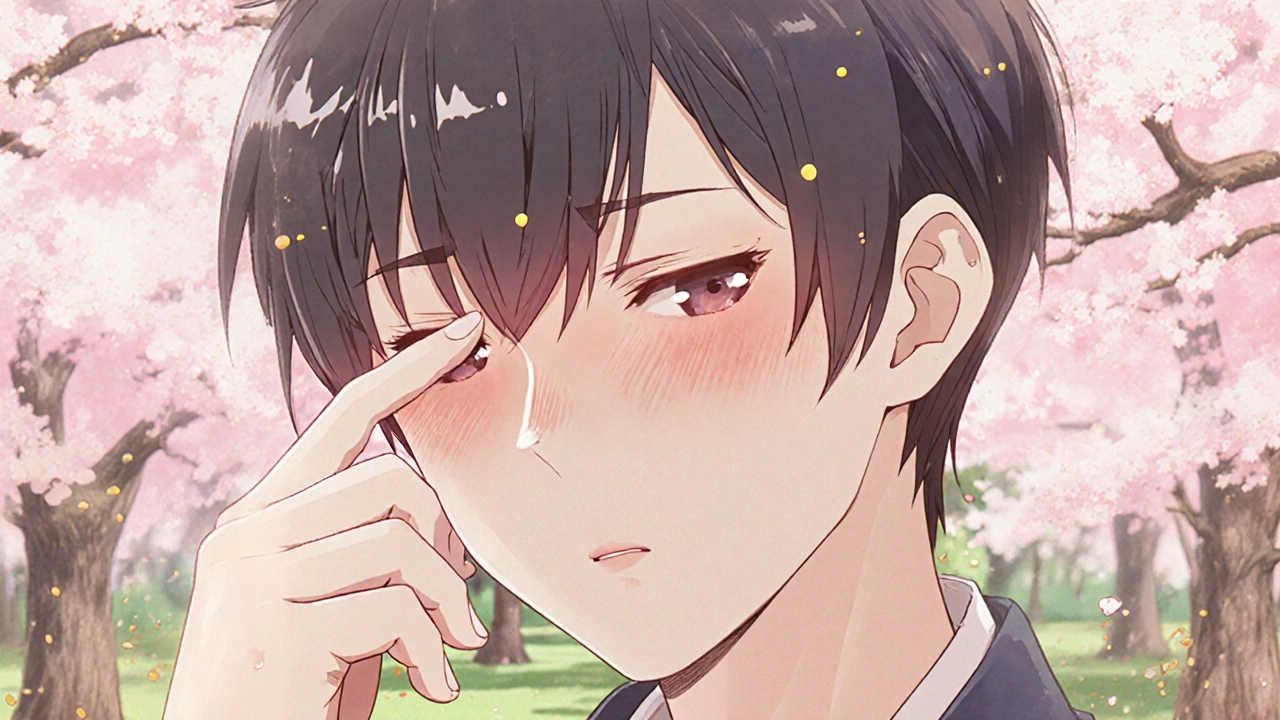When dealing with Allergic Conjunctivitis, an eye condition where allergens irritate the conjunctiva, causing redness, itching, and watery discharge. Also known as eye allergy, it frequently shows up alongside Seasonal Allergies. Managing this condition often means tackling the underlying Mast Cells that release histamine in response to pollen, dust, or pet dander. Allergic Conjunctivitis can disrupt daily life, but a clear plan makes it manageable.
The most common triggers are airborne allergens such as tree pollen in spring, grass pollen in summer, and weed pollen in fall. Indoor culprits include dust mites, mold spores, and pet dander. When these particles land on the eye surface, they bind to IgE antibodies on mast cells, prompting a release of histamine and other inflammatory mediators. This chain reaction produces the classic triad of itching, redness, and tearing. Understanding the trigger spectrum helps you target the right prevention steps.
One of the fastest ways to calm the eye’s reaction is with Antihistamine Eye Drops, topical medications that block histamine receptors on the ocular surface. By preventing histamine from binding, they reduce itching and swelling within minutes. Brands like ketotifen, olopatadine, and azelastine are available over the counter, while stronger formulas may require a prescription. Using drops twice a day during peak allergy season often keeps symptoms at bay without the systemic side effects of oral antihistamines.
For people with more severe inflammation, doctors may add a short course of prescription corticosteroid drops. These suppress the broader inflammatory cascade, but they’re reserved for short‑term use because of risks like increased intra‑ocular pressure. Combining a mild antihistamine with a lubricating drop can protect the tear film, which often becomes unstable during allergy flare‑ups. A well‑balanced regimen tackles both the cause (histamine) and the symptom (dry, irritated surface).
Environmental control is another pillar of management. Simple steps—closing windows, using HEPA filters, washing bedding in hot water weekly, and showering after outdoor activities—can dramatically lower the allergen load. Wearing sunglasses outdoors reduces direct exposure to pollen, while keeping pets out of the bedroom limits dander contact during sleep. These measures address the root problem rather than just the eye’s reaction.
Nutrition also plays a subtle role. Foods rich in omega‑3 fatty acids, such as salmon or flaxseed, support a healthy tear film and may reduce overall inflammation. Some studies suggest that vitamin C and quercetin, a natural flavonoid, can stabilize mast cells and lower histamine release. While diet alone won’t cure allergic conjunctivitis, it can complement medical therapy and improve comfort.
If symptoms persist despite these measures, an eye‑care professional might perform a conjunctival provocation test. This involves applying small amounts of suspected allergens to the eye to pinpoint the trigger. The test’s result guides personalized treatment, such as allergen‑specific immunotherapy (allergy shots) that gradually desensitize the immune system over months or years.
Children experience allergic conjunctivitis just as often as adults, but they may have a harder time describing itching or distinguishing it from a cold. Parents should watch for signs like frequent eye rubbing, red eyes that don’t improve with typical cold remedies, or complaints of “sand” in the eyes. Early intervention prevents chronic irritation and potential complications like keratoconjunctivitis sicca (dry eye).
Contact lens wearers face an added challenge because lenses can trap allergens and reduce tear exchange. Switching to daily disposable lenses during peak seasons or giving the eyes a break can lessen irritation. If you must wear lenses, clean them with preservative‑free solutions and avoid reusing the same pair for too long.
Finally, keep a symptom diary. Note the dates, weather conditions, outdoor activities, and any new products (like cosmetics or cleaning agents) you used. Over time, patterns emerge that point to specific triggers, making it easier to adjust your environment and treatment plan. A diary also provides useful data for your doctor during follow‑up visits.
Below you’ll find a curated collection of articles that dive deeper into each of these topics— from detailed guides on choosing the right antihistamine eye drops to step‑by‑step strategies for reducing indoor allergens. Whether you’re looking for quick relief or a long‑term plan, these resources will help you take control of allergic conjunctivitis and keep your eyes comfortable year round.

Discover how allergy shots (immunotherapy) reduce eye itching, lessen medication, and offer lasting relief for allergic conjunctivitis.
CONTINUE READING